
What Sunglasses Should I use for Water Sport?
Best Sunglasses for Water Sports
Bright sun reflecting off the water and sails, fast tacks, spray from the waves, and weather that changes at a moment's notice. Sailors have to deal with these conditions when they are out on the water, and they require eye wear that can handle the challenge.
Why wear them?
Firstly, IT'S IMPORTANT. People who do water sports, above all other sports, are at a high risk for eye diseases such as cataracts and pterygium (a benign growth on the eye also known as surfer's eye). So prevention is the best medicine.
They offer protection from harmful UV radiation. This may seem obvious but it is important to check your eyewear does have a UV filter. Sunglasses without UV filters do far more harm than good. They increase pupil dilation which in turn increases the amount of radiation reaching your eyes causing greater damage than if you did not wear them. All sunglasses on the eyekit website come with a UV radiation filter and all prescription glasses and sunglasses that are ordered with a tint include a UV 400 coating as standard. This coating provides 100% UV A, B and C protections, whatever tint is applied.
What are the main feature to consider when buying sunglasses for water sports?
Lens Features
Below are a few key considerations when choosing a frame that has a number of lens options.
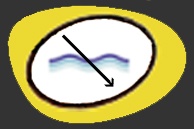
Polarized Lenses. When you're out on the water, you can't afford to overwork your eyes by wearing poor quality sunglasses. But when direct sunlight or light reflecting off the water distorts your vision, that's exactly what happens. That's where Polarised sunglasses make a difference. These cut out up to 98% of reflected light reducing glare from the water surface on a sunny day. By eliminating the glare means you can see everything more clearly, including hazards, underwater rocks and other boats or water users. Colour perception is improved and so is your awareness of depth.

Photo Polar Lenses -(photo polar lenses are both photochromic and polarizing). If you live in a climate such as Great Britain where it can be cloudy one minute and sunny the next, then Photochromiclenses that are polarized are worth considering. PhotoPolar lenses are activated by the amount of Ultra Violet (UV) light absorbed by the lens and get darker or lighter dependent on the weather ensuring that your vision through the lens is clear and bright at all times. The best PhotoPolar lenses for sailing will cover a range from Category 2 to Category 4 ensuring good light vision from cloudy to bright sunny days.
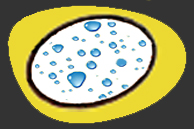
Hydrophobic Coating. This coating is similar to a wax coating on a car making your lens water repellent. It is ideal for shedding the spray rising from you boat or rain droplets when out on the water.

Lens Colour. Grey offers the best all-around vision when you're on the water. It's a colour that helps you see into deep water and enhances your perception. It also improves accuracy and offers better colour rendering. This is essential when you're looking for key mark colours such as lateral marks, cardinal and safe water buoys. Other colours you could consider are amber or copper. These are great for everyday use but have the added benefit of filtering blue light and therefore enhancing reds and greens which is useful for sighting buoys against water and bright blue skies.
Frame Features
Improving your vision is important and so is ensuring you have hard-wearing impact-resistant styles that are light-weight and comfortable. Choose from designs that include ventilated rubber nose pads and comfort-grip nose fittings that will keep your sunglasses from slipping or falling off into the water. Other features to consider are:
Wrap around frames. These fit snug on your face keeping the wind and spray at bay. Also, the greater the lens curvature, the greater protection and improvement in periphery vision. Ideal for keeping an eye on those water users around you or behind you in a competition.
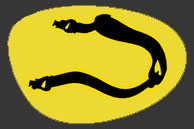
A Head Strap or retaining bands. Only a head strap can ensure sunglasses will be held secure in any weather conditions. Most sunglasses for water sports will include a floatable headband for added insurance in case they are accidentally dropped in the water. If you choose a frame that doesn't include one, don't worry, you can always buy one separately. Click here for Headbands.

Floatable Frames. These are for the sailor, windsurfer or other water sport's enthusiast, who spends a little more time in the water than they do out of it. Unlike other frames you won't have to watch these sink out of sight, they will sit pretty on the top of the water until you're able to collect them.
Fully Rimed Frame. On balance, fully rimed frames are better. They are more robust which is what you need in water sports such as sailing, windsurfing, jet skiing and wake boarding where the is a danger of being hit in the face.

Front Venting. These allow air to flow behind the sunglasses reducing the chance of fogging behind the lens during periods of intense activity.

Protective Skirt. This is essentially a padded, flexible material around the frame of the sunglasses that conforms to the contours of your face keeping spray and wind out of your eyes.
Fog Busters. There are a number of anti-fog treatment systems and sprays on the market such as the Fog Busters that we offer - these are great for eliminating fog and mist on lenses. They might not be permanent and need reapplying once every few days but they can make all the difference out on the water.
I wear prescription eyewear - Which prescription lenses should I consider for water sports?
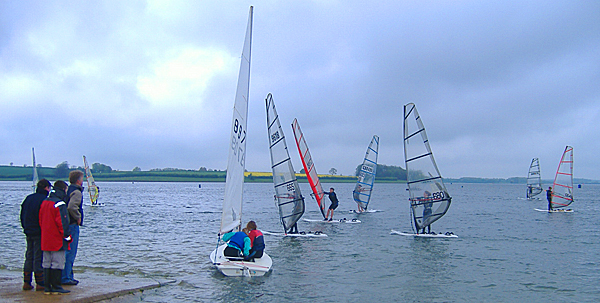
When you order prescription lenses for your chosen frame you have the advantage of being able to specify exactly the type of lens material, tint and coatings you need. So it is worth taking time out to think about the primary use for your prescription lenses and which features will enable you to get the best out of them.
We have highlighted the benefits of Photochromic and Polaroid lenses that that you can incorporate into your prescription. However, if you decide to go for a non-polarized tint, which we do not advise, it is worth noting that you can specify any category of tint you require. We offer Category 0 which has a light transmission factor (LTF) of 80% to Category 4 with an LTF of 5%. For sunny weather, most sailors will require a Category 3 tint which we supply with a LTF of 15%. This is the average tint for most non-prescription sunglasses, however, it is your prescription and you can specify any LTF % you require within the lens parameters specified.
If you have a prescription over 1 sphere, it would be worth considering our'Performance' lenses. These are Aspheric lenses that are cut with a much improved surface profile enhancing optical performance compared to spherical lenses. They are lighter and can reduce or eliminate optical distortions in the peripheral area of vision which can be an issue with curved lenses in wraparound sunglasses. For this reason, when you select sunglasses that require 8 base lenses, we don't give you the choice and go even further by only offering a'High Performance' prescription package that incorporate Free-Form lenses. These lenses are aspheric just like our performance lenses. However, using the latest free-form technology, they are cut using a digital design process that takes into consideration over 40,000 points across the lens. This is particularly important for wrap lenses as it ensures they provide near perfect vision across the whole curvature of the lens. They are more expensive but there is no point in buying sunglasses that have highly curved lenses for better periphery vision if you vision becomes distorted towards the edges of the lens.
Polycarbonate or NXT Lenses?
Either one of these options are necessary for water sports. They provide impact resistance and are designed not to shatter, which any sailor or windsurfer will appreciate if they've hit their face on the boom when tacking or capsizing. Other types of lenses can shatter with the obvious danger to the eye.


Polycarbonate lenses are typical of most sports sunglasses and provide good impact protection. However, NXT, which was developed by the US army for the windscreens of helicopter gunships, is even stronger than polycarbonate and has improved optical qualities providing sharper images. It is robust providing better stability over time (it will not crack). It is unbreakable, solvent resistant and ultra-light (10% lighter than polycarbonate and 16% lighter than lenses in standard frames). It is the best lens material on the market today and not much more expensive than polycarbonate.
What about prescription lens coatings for sailing?
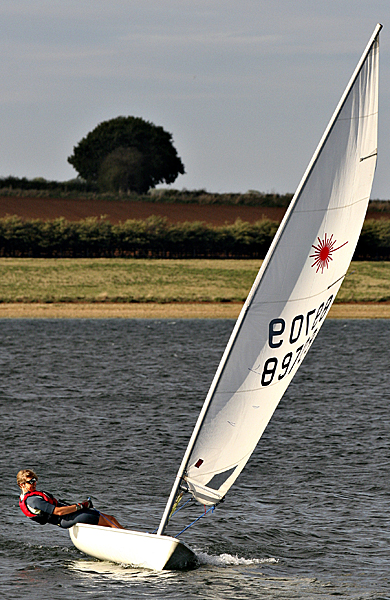
In addition to a hard coat that we apply to all our lenses, it is worth considering having a hydrophobic coating applied for reasons mentioned above. At Eyekit we have prescription packages that include a'Crystal Clear' coatings option. This includes both a hydrophobic coating and an anti-reflective coating (AR). The AR coating eliminates those irritating reflections you sometimes see on the back surface of your lenses when the sun is behind you.
If you decide to choose a standard tint, rather than one that is polarized, applying a mirror or flash coating has a distinct advantage for water sports. Mirror coatings are good for situations that require a reduction in the overall brilliance of light, such as glare caused by light reflected from the surface of a lake.
Should I choose a clip-in prescription?
The advantage of a Clip-ins arevery cost effective as you can just buy standard ‘lifestyle' lenses and rely on the frame and polycarbonate lenses to provide the protection and tint. It is worth looking for a brand that uses the same clip-in for many frame options so you can then switch between frames for specific requirements.
One advantage of the Julbo clip-in is that unlike most other manufacturers, all their frames use only two clip-in optical inserts. For example, you could buy one clip in prescription for their nautical sunglasses'<a href="https://www.eyekit.co/sunglasses/julbo-sunglasses/julbo-sports-prescription-sunglasses-race-2.
- Ordering Prescriptions
- Lens Options Explained
- About Glasses
- About Sunglasses
- About the Eyewear Brands
- Eyecare
- Eye Conditions
- Frequently Asked Questions
- Blog
- About Us
- Why Choose Eyekit for your Prescription?
- Varifocal Prescriptions
- Tint Colour Options for Prescription Lenses
- Special Offers
- Guide to Buying Eyewear Online at Eyekit
- Choosing Eyewear for Sport
Latest From Eyekit
Rain Rain Go Away- Why you need a Crystal Vision Coating on your Prescription Glasses and Sunglasses
The snow was short lived but us Brits know that the Winter/ Spring showers have just begun. You know how it starts, you get out your bike or you figure out your hike for the day on the map and
Eyekit’s Top 10 Tips to Help You Keep Your New Year’s Resolution
Every year we make them and every year we try and try but eventually break them. So its time to stop the cycle and (maybe take up...
Our top 5 Eyewear items to Help Your Eyes this Lock Down
We have looked at our top 5 most popular Eyewear items that people needed during the last lockdown that could help you with this...
Veganuary - Can Excluding Animal Products Have an Impact on Your Eyesight?
We often make connections between diet and cardiovascular disease or obesity but we often forget that eye sight and vision loss is also linked to...
Winter Is Here
Here's how you can help out your eyes this winter. THE SUN HAS GOT HIS HAT ON- even in winter You might only think you need your sunnies...








